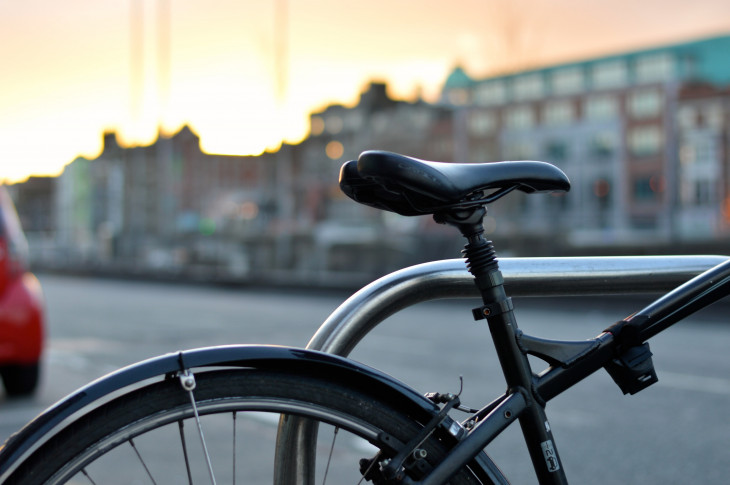By The Acclaim Team on 28th January 2022 in News
From time to time, driving laws and regulations will change to keep in line with protecting all road users. As a learner driver or if you’ve recently passed your driving test, it’s absolutely essential that you understand these new driving laws and how they affect you, cyclists, pedestrians and other road users.
To break down the new driving laws for 2022, we have compiled a list of everything you need to know. This includes driving bans, stricter penalties, amendments to the Highway Code, and other things you will no longer be able to do behind the wheel.
Driving Bans for Phone Usage
While it has always been illegal to call or text using your mobile phone when driving, from now, drivers can now be banned from driving for using their phone to take photos or videos, scroll through playlists and play games.
Drivers caught will also be faced with a £200 fixed penalty notice and six points on their licence.
Council Fines
Previously, councils could only distribute fines for driving in bus lanes and unauthorised parking. However, from now on, councils will be authorised to distribute penalties for motorists who perform bad manoeuvres, such as ignoring road signs, stopping in a yellow box junction or failing to correctly use indicators.
This new rule gives local authorities permission to tackle dangerous drivers and those who pose a risk to other road users.
Changes to the Highway Code
Perhaps the most serious change for motorists in 2022 is the amendment to the Highway Code, which comes into play on the 29th of January 2022.
For the very first time, a new hierarchy has been introduced to protect those who are more vulnerable on the road, for example, pedestrians, cyclists and horse riders.
The new hierarchy in the Highway Code changes is as follows:
-
Pedestrians
-
Cyclists
-
Horse riders
-
Motorcyclists
If you hadn’t already noticed, the new hierarchy system reflects on road users who can cause the greatest harm in the event of a collision and should therefore take the greatest responsibility to reduce danger to others.
Cyclists and horse riders will have a responsibility to reduce danger to pedestrians.
Priority for Cyclists
Under the newly amended Highway Code, motorists should not cut across cyclists, horse riders or horse-drawn vehicles driving ahead when you are turning into or out of a junction, changing direction or changing lanes.
Motorists should not turn at a junction if this would cause cyclists, horse riders or horse-drawn vehicles going straight ahead to stop or swerve. You should stop and wait for a safe gap if necessary.
Priority for Pedestrians
As pedestrians are more vulnerable, drivers, motorcyclists, and even cyclists should give way to pedestrians crossing or waiting to cross a road, even if this is a road you are turning into or turning out.
Under previous rules, motorists give way to pedestrians if they are already walking at a zebra crossing. With the new rules, motorists should give way to pedestrians and cyclists if they are waiting at a zebra crossing.
The Highway Code states “At a junction, you should give way to people crossing or waiting to cross a road into which or from you are turning”.
Changes to Overtaking
New amendments to the Highway Code also mean that motorists can cross a double white line to overtake a cyclist or horserider travelling at 10mph (or less) if necessary, providing that the road is clear.
When overtaking up to 30mph, motorists should leave at least 1.5 metres of space to allow more room when overtaking. Under 10mph and when passing horses and horse-drawn vehicles, motorists should leave at least 2 metres. When pedestrians are walking on the road (for example, there is no pavement) motorists should leave at least two metres when overtaking, and must keep to a low speed.
If it is unsafe to overtake or not possible to meet the above requirements, motorists should wait behind and not overtake.
The Dutch Reach
When opening a car door, there is an increased risk of cyclists becoming injured, with over 60 cases of injuries or death every year in the UK due to car doors being opened in a cyclists’ path. Cyclists have very little time to react when this happens, with many victims being pushed into oncoming traffic. On top of this, it is a criminal offence to open a car door (or permit a passenger to do so) if it endangers other people.
Fortunately, the Dutch Reach is a simple technique that can prevent cyclist injuries from taking place.
The technique of the Dutch Reach works by opening the car door with your hand furthest from the door. For UK drivers, this will be your left hand. During this technique, you should turn your body to face the door window to check blind spots where pedestrians or cyclists may be. The technique also stops you from opening the door too widely and gives you more control over how far the door opens so as to avoid injuring passing cyclists.
From the 29th of January, the Dutch Reach will be introduced to the Highway Code in the UK after years of campaigning.
Speed Limiters
From the 6th July 2022, all new cars produced will be built with speed limiters. This initiative will use Intelligent Speed Assistance (ISA) black boxes that use GPS to calculate the speed limit and ensure the car cannot exceed this.
While this rule isn’t entirely in place in the UK, it is in place in the European Union, where most vehicles are produced. This means that, from July 2022, any car produced in the European Union and imported to the UK will be fitted with a speed limiter.
Electric Car Charging Cables
For the first time ever, electric car charging cables have been mentioned in the Highway Code. The latest version of the Highway Code explains, "every care should be taken when charging vehicles to minimise any danger".
This means that any electric car users should take responsibility for their charging cables and ensure they are not left in the street where pedestrians could trip over.
Pavement Parking
Pavement parking is currently illegal in London, with a plan set to introduce the ban to Scotland in 2023.
It seems pavement parking will also be banned in England and Wales soon, with councils expected to be given the go-ahead to issue £70 fines to curb offenders. However, it’s not clear when this will be introduced to England and Wales and may even be introduced in 2022 or even 2023.
Safe Driving With Acclaim Driving
These new regulations prove a greater responsibility on drivers to look out for horse riders, cyclists and pedestrians, so this does mean that driving tests will be affected by the new rules.
It’s crucial that all drivers, including those learning to drive, are aware of these changes in order to prevent a driving test fail. Many of the rules in the Code are legal requirements, and if you disobey them, you’re committing a criminal offence. For more information on how the Highway Code changes affect driving tests, we advise reading Changes to The Highway Code: how they affect driving tests.
At Acclaim Driving, our lessons are geared towards learning in the most fun and memorable way, with new driving regulations and laws in mind. Gaining your driver’s licence can give you an incredible sense of freedom after all of the hard work you’ve put in - after all, the days and nights of research have finally paid off!
Give us a call to discuss any questions you may have or to check availability on a date that suits you.




